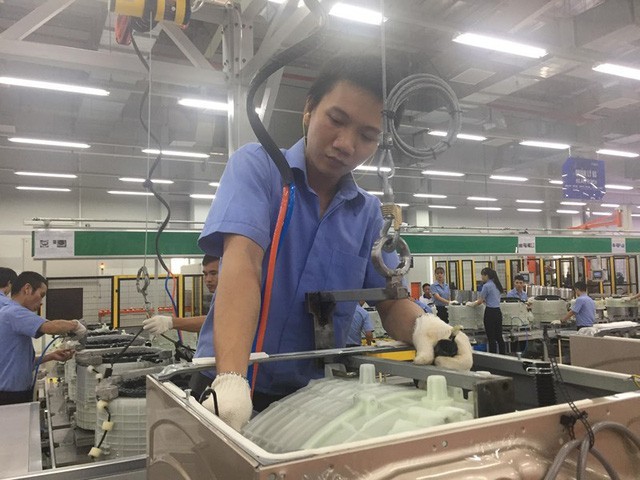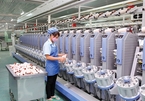Vietnam is unlikely to benefit much from the US-China trade war, acccording to experts participating in the seminar on US-China trade confrontation organized by the Vietnam E-commerce Association in mid-July.

Giang said that US-China trade is having a negative impact on Vietnam’s textile and garment industry.
Vietnam, for example, exported over $3 billion a year worth of yarn, including $2.4 billion to China. But this year, Vietnam’s exports are small compared with the plan. This is because China is encouraging its enterprises to export yarn back to Vietnam.
In doing this, they have a big advantage as the input VAT rate in Vietnam is 10 percent, while the tax rate is 17 percent in China.
|
Vietnam is unlikely to benefit much from the US-China trade war, acccording to experts participating in the seminar on US-China trade confrontation organized by the Vietnam E-commerce Association in mid-July. |
As the US has imposed a 25 percent tax rate on Chinese garments, Chinese has tried to force prices by 15 percent when negotiating with Vietnamese yarn exporters. As a result, the Chinese market is nearly close to Vietnam’s yarn.
Vietnam exports $40 billion worth of textiles and garments yearly, 42 percent of which goes to the US market. However, US importers now do not make payments with L/C (letter of credit) mode, but have changed to T/T (Telegraphic Transfer). They want to make deferred payment by 30, 60 or even 120 days. This payment method is risky.
Meanwhile, when importing materials from China to make products, Vietnam has to make payments under the L/C mode.
More dangerously, Vitas has discovered that some Vietnamese enterprises have helped Chinese avoid US taxation. Chinese textile and garment products that are nearly finished products are carried to Vietnam where they are ironed and packed to obtain Vietnamese origin.
“If we cannot clear this fraud, Vietnam will be put at risks before the US,” Giang warned.
Nguyen Thi Thu Trang from the WTO Center of VCCI said since the US-China trade war broke out, Vietnam’s export growth to China has decreased. The exports in the first five months of 2019 increased by 1.4 percent only compared with the same period last year. Meanwhile, the growth rate was 38 percent in 2018.
In other markets, Vietnam’s products have to compete with products from China and other countries.
“This shows our predictions that if Chinese goods cannot enter the US, they will head for other markets, which makes it more difficult for Vietnam to compete with others,” Trang said.
Moreover, as China encourages more consumption of domestic products, Vietnam’s products will find it harder to enter the Chinese market.
Chi Mai

Vietnam’s textile and garment sector benefits from FTAs, trade war
The US-China trade war and new FTAs have given a push to Vietnam’s textile and garment industry, helping it gain two-digit growth rates.

Textile, dyeing projects unwelcome in many localities
Many localities in the country have refused textile and dyeing projects due to fears of environmental pollution, said Vu Duc Giang, chairman of the Vietnam Textile and Apparel Association (VITAS).
 “We have discovered some Vietnamese businesses which joined hands with Chinese to help Chinese evade the US levy, " said Vu Duc Giang, chair of the Vietnam Textile and Apparel Association (Vinatas).
“We have discovered some Vietnamese businesses which joined hands with Chinese to help Chinese evade the US levy, " said Vu Duc Giang, chair of the Vietnam Textile and Apparel Association (Vinatas).